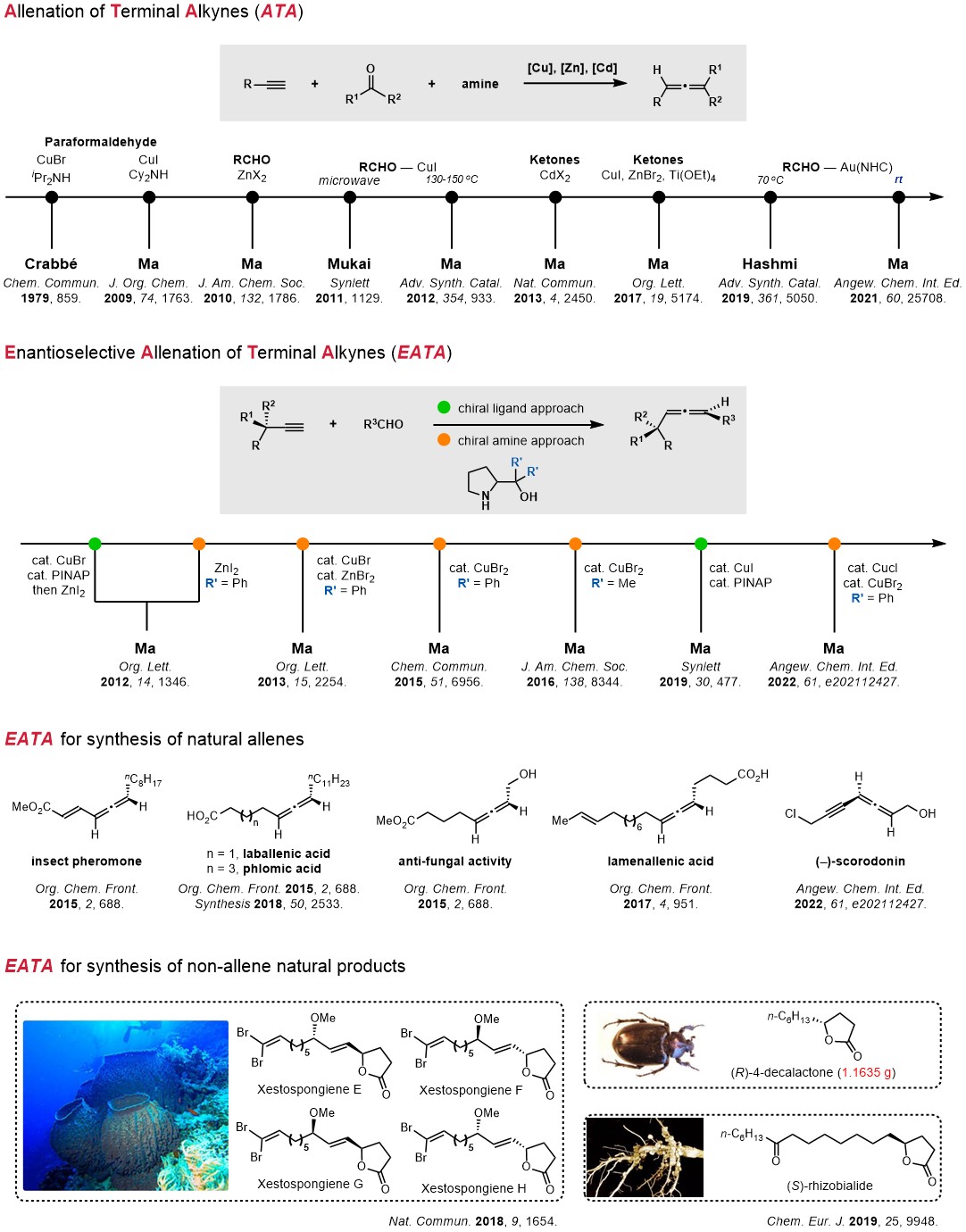
In 1979, Crabbé et al. reported the first CuBr-mediated allenation of terminal alkynes (ATA) reaction to form monosubstituted allenes from 1-alkynes and paraformaldehyde in the presence of diisopropylamine. During the following 30 years, the ATA reactions were limited to paraformaldehyde. This Account describes our efforts toward the development of ATA reactions in the last ten years. First, we improved the yields and scope greatly for the synthesis of monosubstituted allenes by modifying the original Crabbé recipe. Next we developed the ZnI2-promoted or CuI-catalyzed ATA reactions for the synthesis of 1,3-disubstituted allenes from terminal alkyne and normal aldehydes. Furthermore, we first realized the CdI2-promoted ATA reaction of ketones with pyrrolidine as the matched amine for the preparation of trisubstituted allenes. Due to the toxicity of CdI2, we also developed two alternative approaches utilizing CuBr/ZnI2 or CuI/ZnBr2/Ti(OEt)4. The asymmetric version of ATA reactions for the synthesis of optically active 1,3-disubstituted allenes has also been achieved in this group with two strategies. One is called “chiral ligand” strategy, using terminal alkynes, aldehydes, and nonchiral amine with the assistance of a proper chiral ligand. The other is the “chiral amine” strategy, applying terminal alkynes, aldehydes, and chiral amines such as (S)- or (R)-α,α-diphenylprolinol or (S)- or (R)-α,α-dimethylprolinol. Optically active 1,3-disubstituted allenes containing different synthetically useful functionalities such as alcohol, amide, sulfamide, malonate, carboxylate, and carbohydrate units could be prepared without protection with the newly developed CuBr2-catalyzed chiral amine strategy. Recently, we have applied these enantioselective allenation of terminal alkyne (EATA) reactions to the syntheses of some natural allenes, as well as some non-allene natural products.
Applications by other groups
These ATA reactions for allenes syntheses have been used by over 120 different research groups in their projects. The data were updated on January 3rd 2025 merely based on data-mining via SciFinder. Click the Link for the details.




